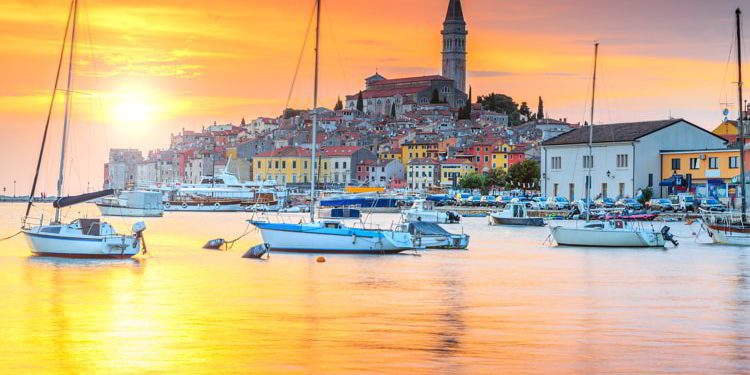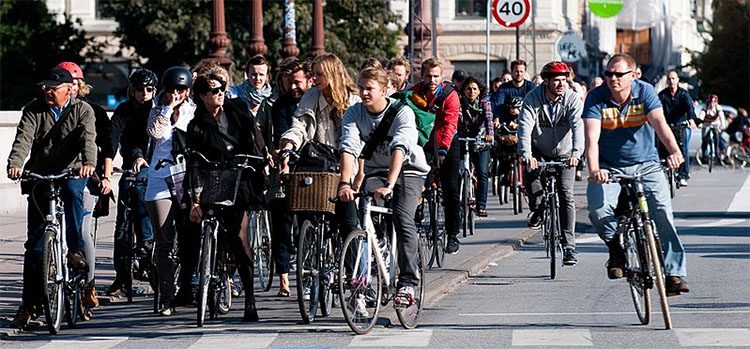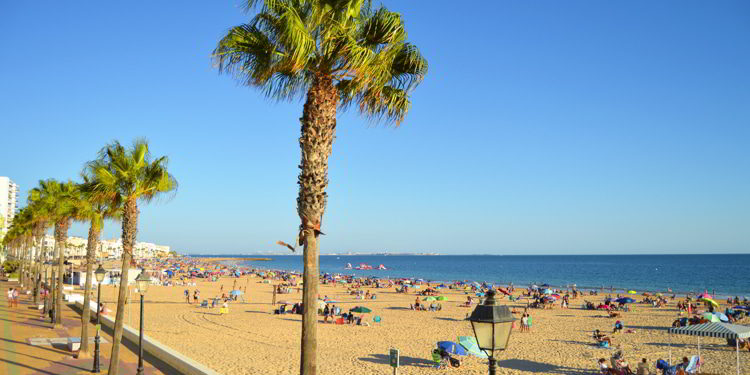I’m often asked for advice on traveling affordably in Europe, so today I thought I’d share my top tips on how to reduce your expenses while exploring this culture-rich continent…
Choose The Most Affordable Destinations

The farther east you go, the cheaper things get. Central and Eastern Europe are a great value: Czech Republic, Hungary, Romania, Poland, etc., are all still enough under the radar that prices don’t yet reflect the amazing cultures and lifestyles they offer.
Slovenia, Croatia, and Montenegro are gorgeous destinations that are still affordable but won’t remain so for long. All are great options for superb quality food and wine that should cost much more than it does (and the portions are huge).
In Western Europe, Spain and Portugal can be very affordable outside of major cities, downright cheap in small towns. Even the big cities are cheaper than other Western European countries—Barcelona and Lisbon are much cheaper than Paris on the whole, for example.
In the south of France, avoid the east if you’re on a budget, but everything more or less west of Montpellier is a fraction of the price. The Occitanie region is a gem that’s full of cute market towns as well as being right on the coast (an underused coast at that, by comparison).
The eastern coast of Italy is also underknown and therefore still quite affordable. Abruzzo, for example, is one of my favorite regions in the country, offering both pristine beach in summer and mountains to ski in winter.
Time It Right

Plan your visit for a time of year that you enjoy being outside… if you’re uncomfortable with the outdoor temperatures, you’ll be constantly looking for indoor retreats, whether for heat or to cool off, and that’s sure to up your costs.
Come during spring or autumn, though, and you’ll not just be content to be stuck outdoors, you’ll relish it.
Capitalize on picnicking and free sites, they are abundant in Europe. Go to parks or sit by lakes/rivers/fountains/etc. with baguettes, local cheeses, and meats.
Grab a book, a towel, and a bottle of local wine for less than 5 euros and camp out in a park or on a plaza bench for a few hours—odds are the park or plaza itself is a check off a tourist list.
Go on free walking tours to be shown everything there is to see that comes without an entry price. Visit all the major sites that you can see from the outside without paying the entry fee—this alone will keep you busy in most cities.
London, Rome, Paris, Barcelona, Lisbon, and many more European cities were practically made to be seen from the outside.
And don’t forget that many museums and nearly all galleries are free to enter. Make a list of them and try to visit them on a weekday when there are fewer visitors. Thursday nights are gallery opening nights in many cities, the day when a new show is unveiled, often accompanied by complimentary wine and sometimes snacks.
All major cities have apps that offer self-guided walking tours. I’ll warn you that they are a mixed bag when it comes to usability and quality, but it’s a good place to start if budget is your main concern.
Start Your New Life Today, Overseas
Live Like A Local
Above all, avoid hotels. Airbnbs (or whatever other home rental service) are typically a better value than hotels. Even if the nightly rate is on par with hotels, you’ll be able to cook at least some of your own meals, take home and heat up leftovers instead of leaving them on the table, etc. Plus, they’re often in more residential (i.e., cheaper) parts of town than hotels.
If you’re looking to make a move, then you especially want to prioritize Airbnbs, which will give you an invaluable insight into living in the city.
Construction quirks, grocery shopping, figuring out the keys, intercom, elevator, etc…. all this is a major insight into what life will be like in the future, so take advantage.
Make sure to do some neighborhood research before you set out—whether you’re a tourist or a potential new resident. If you’re a tourist, you won’t want to waste valuable time and money getting to and from your place to all the sights you want to see.
Most importantly, if you’re making a scouting trip with an eye to moving there eventually, you don’t want to waste time staying in any part of town that you know you won’t like.
If you can, stay in a few different parts of town. If you’re thinking of moving, this allows you to test different neighborhoods on the same visit. If you’re just a tourist, though, it might not be worth the time it will take to move from one place to another—though you’ll likely be glad you did if you make the effort to. You’ll feel as though you’ve done and seen more… and you will have.
Find Your Feet

Use your own feet to get around. In Europe, the best way to experience most places is by foot. Bike rentals are cheaper than public transport, too, and allow you to see what’s around you.
Not only will this save you money, it will also show you how you’d get around as a resident, if that’s your goal.
Failing that, most European cities offer the best public transport systems in the world—metros, buses, funiculars, trains, trams, ferries, water taxis… all costing less than 2 euros per trip.
Again, if you’re living there, you won’t be taking taxis and Ubers every day, you’ll be figuring out the local options—do it now to see if you can hack it.
Check out the local hop-on-hop-off bus options if there are any, and make full use of them to get to as many places as you can on the same ticket. It’s not an efficient form of travel, as a typical route is about two hours, but it can be the best way to get to some of the more obscurely located sights.
In Malta, my husband and I got a pass for a few days and used it as our main form of transport to get across the island. That won’t be a common scenario, it only worked in this case because the island is so small and other bus tickets would have been more expensive to buy individually… but it’s something to look into.
Start Your New Life Today, Overseas
Lunch Like A Lord
If you’re on an eating-out budget in Europe, never eat within a few blocks of any tourist location. You’ll pay through the nose for sub-par, microwaved food made for undiscerning tourists.
If you’re starving and can’t wait to get back to a reasonable part of town, avoid “local” cuisine near tourist spots—they attract business easily, prioritizing speed and international tastes over quality or authenticity.
Instead, choose the little bakery or taco or empanada or gyro joint next door—odds are they have managed to keep their spot on tourist lane by offering a better standard at a good value.
Eat lunches out rather than dinners, especially on weekdays when most European restaurants offer a formule or midday menu of some sort (sometimes called a business menu). These multi-course meals aimed at those who only have an hour lunch break are an excellent value and can be half the price of a dinner menu from the same restaurant.
The menu below is from one of my favorite restaurants near my office in Paris. The food is exquisite and the value of the lunch menu is unbeatable…
The same items served for dinner (left menu) are served at what amounts to nearly half the price at lunch time (right menu)…


A La Carte Prices:
Soup: 13 euros
Steak or shellfish: 26 euros
Glass of wine: 7 euros
Dessert: 9 euros
Total bill: 55 euros
OR
Lunch Menu Prices:
29.90 euros for all of the above…
Ask for tap water instead of bottled water. In France, only tourists drink bottled water. Waiters know this and don’t offer tap to those who seem to be foreign.
In French, you’d ask for “une carafe d’eau” (a pitcher of water). Look up the common way to ask in whatever country you’re in.
You can also do this with wine. Instead of getting a glass or a bottle, in most cafés you can get a carafe of house wine. Either a small one (about two glasses) or a big one (about four) will always be a better value than either two glasses bought separately or a whole bottle.
The Key To Making The Most Of Your Budget
The big sacrifice you’ll make in Europe on a budget is on the big ticket tourist items and entertainment. The key to making the most of your budget is to prioritize.
Unless you’re an art fanatic, you might not feel a need to actually go into the Louvre for 17 euros… especially when you can enjoy plenty of it from street level.
On the other hand, if you are a devotee, 17 euros can be a bargain price for an all-day activity (it would take several days to see everything the Louvre houses).
Bring a sandwich with you to avoid the pricey museum café food, and you have a deal of a day.
If you are an art buff, do some research into the best value museum tickets, which can often be bought in bundles to save on multiple entrances.
Day or week passes can give you entry to a range of sites at a lower rate than you’d get buying them individually.
If you’re a foodie, then allocate your funds to eating out. Again, do some research to discover some of the hidden gems the city offers—follow local food bloggers, Instgrammers, etc.
Sometimes the cheapest food is the best food—especially if you’re in a place that has a developed street food culture.
Spain wins the street food category in Europe, with dozens of different tapas you can buy from a window walking down the street or enjoy at the most upscale eateries.
In France, street food is crepes, In Italy, it’s arancini… in the Netherlands it’s bitterballen, in Germany it’s pretzels. All of these are delicious, authentically local foods that can be bought with the change in your pocket.
Check foreign currency exchange rates here.
Europe Can Be More Affordable Than You Think…

If you’re spending time in the places where the most famous sites are, you have to pay those market prices… if you want to see Paris, Rome, or Venice, you’ll have little choice but to pay the prices these premium destinations can charge for food, lodging, and entertainment.
But you don’t need to worry that you’ll break the bank on a trip to Europe—whether you’re coming as a tourist or someone looking to put down some more permanent roots, you can easily control your costs.

Kat Kalashian
Editor, In Focus: Europe









